Malta
March 2022 - World Cruise
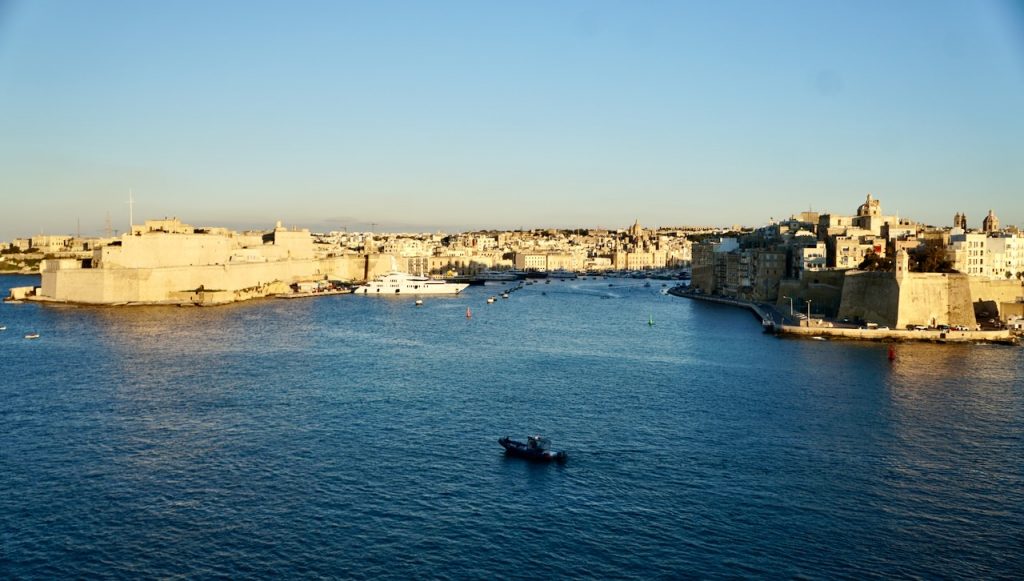
Malta is a country that I never thought I would visit, until it was added as a destination to the revised itinerary of our world cruise two days before embarkation, dropping Asia and the South Pacific and adding South America and more Mediterranean ports. Additional interesting port additions include Corfu, Montenegro, Croatia, and Saudi Arabia.
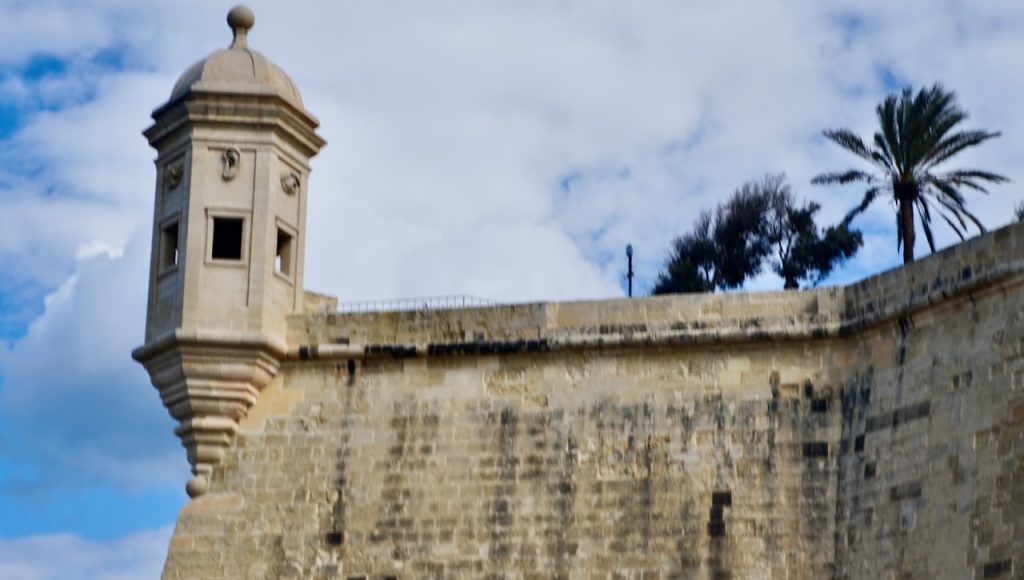
Malta is nicknamed the “navel of the Mediterranean” since it is in approximately the middle of the Mediterranean Sea. Its location has made Malta the object of conquest, starting with the Phoenicians, and followed by the Carthaginians, Romans, Greeks, Arabs, Normans, Aragonese, the Knights of St. John, French, and finally the British in 1813-1974, when Malta became an independent neutral country. As Malta’s most recent rulers, some British influences remain, such as “driving on the wrong side of the road” and the British spelling of certain words. English in an official language, along with Maltese. The native Maltese language is “50{bf249dfdd09a1798812467d1b6a3ef7a33c47359bd28517191144d5320771815} Arabic” with influences from Italian, French, and English. Maltese is considered a “language” as opposed to a dialect, because its current form has been spoken for twelve hundred years, and there is a historical legacy of centuries-old Maltese literature and poetry.
Malta’s most horrendous claim to fame is being “the most bombed place in the world” by the Italians and Germans in the first years of World War II. Both the Allies and the Axis powers recognized Malta’s location as being pivotal to control warship traffic in the Mediterranean as well as being a refueling spot for air raids into Europe or North Africa. Malta’s famous natural harbor at the ancient city of Valletta was world famous before the war as a ship-construction and repair site. Thus, the port city of Valletta became the target of literally hundreds of tons of bombs. A crucial turning point during the war was the resupply by British forces by a huge convoy of thirty-seven freighters protected by battleships, submarines, and destroyers. Relentless German and Italian bombing by airplanes sank the majority of the freighters. Only five surviving freighters were able to reach Valletta. But those supplies of food and petroleum allowed Malta to cancel its impending surrender to the Italians, based on the desperation of its starving inhabitants. Even today, Malta must import ninety percent of its food.
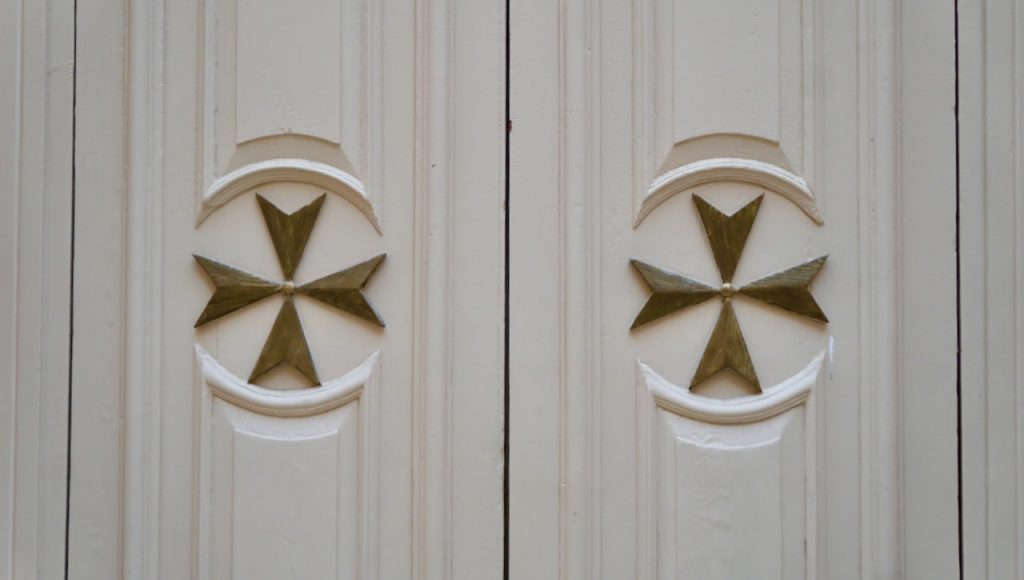
Per Wikipedia, Malta is the tenth smallest country in the world, its main island being only seventeen miles long and fourteen miles wide. Malta’s three inhabited islands contain over half a million residents. According a European Union designation, the whole of Malta “constitutes a single urban region” and is one of the most densely populated locations in the world. Our tours revealed that between villages and cities, every bit of arable land is utilized. But there is nothing left of the forests that originally covered the islands. Artichokes are one of Malta’s export crops. They produce their own wine and olive oil for domestic consumption. Because Malta is located on a “sea mount” surrounded by deep ocean, the quantity and quality of fishing is small. There simply aren’t any areas suitable for the smaller fish that congregate in shallow waters. The ground quickly drops off into very deep waters. There are no beaches on Malta’s coast.
Malta has had free healthcare for all its citizens since the British took control in the early 1800’s. This has made Malta an attractive location for “medical tourists.” High-tech industries also are drawn to Malta by friendly tax policies. And finally, as in most Mediterranean locations, tourism is a very important part of Malta’s economy, particularly supported by the people’s general fluency in English. Up until 2020, Malta offered a “citizenship scheme” which provided a Maltese passport for anyone making a “significant financial investment”. In 2018 alone, Malta earned $432 million from this scheme, which benefited doubtful Russian, Chinese, and Middle-eastern “investors”. This policy was abolished in 2020.
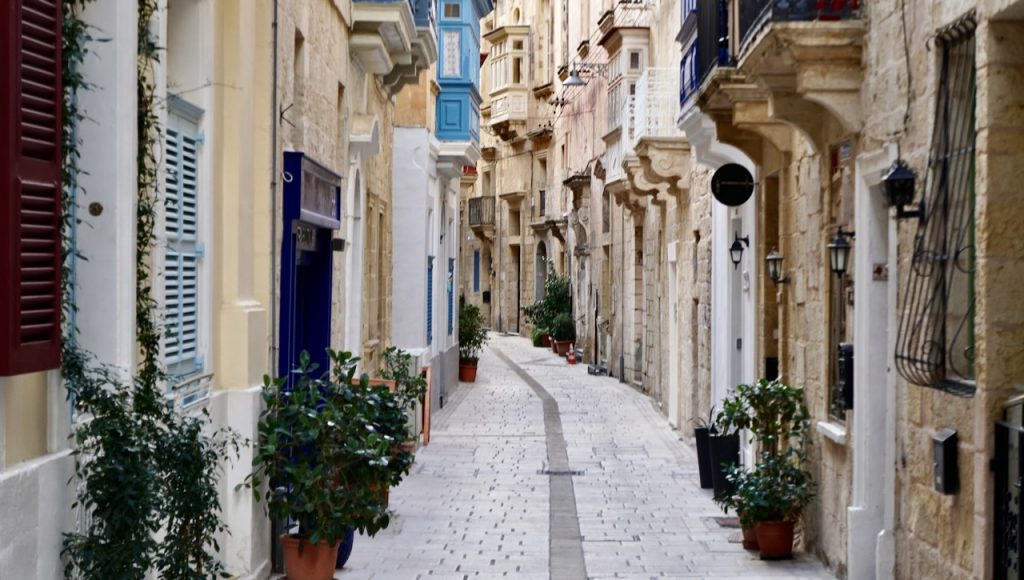
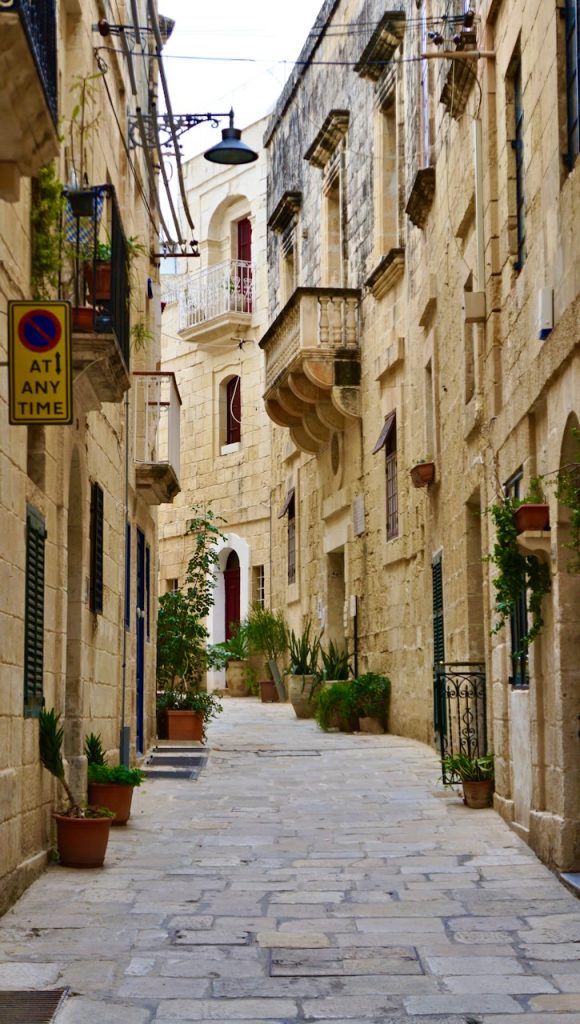
We were very impressed by Malta’s historic buildings. The Maltese have repaired wartime-damaged buildings back to their original appearances. However, there are many buildings away from the port that survived the war unscathed. They maintain their medieval feeling, typically characterized by a particular window-balcony style originated by the Arabs. Many of the narrow medieval pedestrian streets are paved by beautiful marble, similar to Verona or Florence, Italy. The Arabs were expelled by the Normans during the Crusader era, and Malta has been predominantly Catholic ever since. Thus, there are amazing cathedrals to be seen. Because the ship docked overnight which allowed two days of tours, we were able to experience a walking tour of Birgu, across the harbor from the port of Valletta, as well as a bus tour to the ancient cities of Mdina and Mosta.
Our first day’s tour involved a boat ride in the traditional water taxis across the harbor to the ancient city of Birgu. This was the sight of the castle housing the Inquisitor, a church official appointed to seek out and punish people who might violate their strict version of Catholicism. The Malta Inquisition was not as brutal and deadly as the infamous Spanish Inquisition. Nonetheless, we toured the “torture room” and learned about the punishments administered. The Inquisitor was not allowed to draw blood nor to execute prisoners. Punishment could last only half an hour, as measured by an hourglass. Punishments included: sitting on a sharpened piece of wood, having one’s feet compressed and crushed, and being lifted by a rope attached to the hands tied behind the back. Interestingly, this torture was administered to elicit the “truth,” which would be followed by the formal punishment if guilt was indicated. Some people would falsely admit guilt to stop their torture. But sometimes the punishments were less harsh than the tortures. In any case, any deviation from strict Catholic practices could invite punishment.
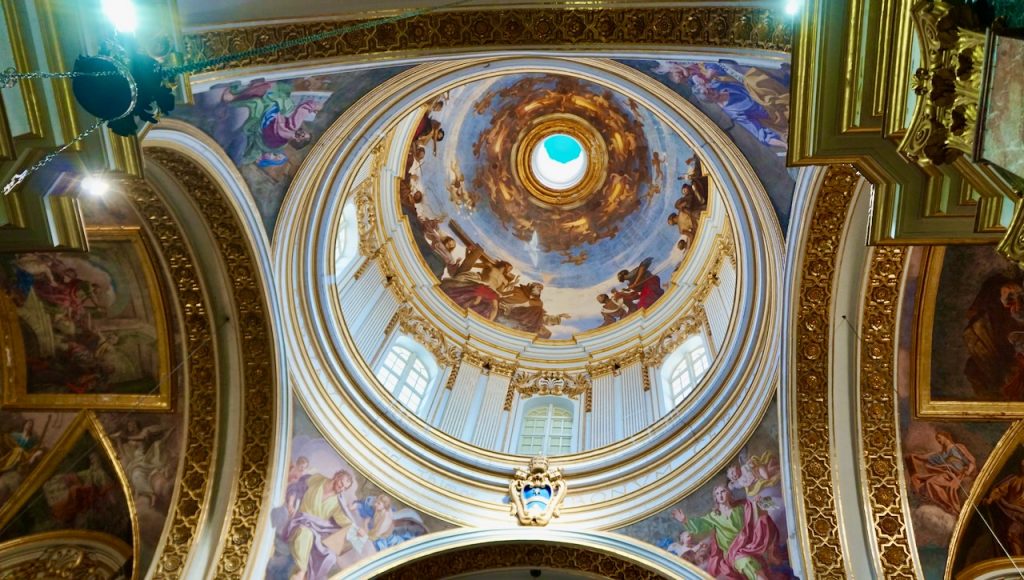
Mdina is an Arabic word simply meaning walled city, which is exactly what the Malta city of Mdina is. We were lucky to attend an evening concert in the incredible Mdina cathedral. Walking to the concert through the walled city’s narrow medieval streets felt like we had traveled back in time by several centuries. As the crowd assembled in front of the cathedral, a row of men in traditional garb held torches, holding back the crowd until the doors opened. The concert repertoire consisted of Baroque and Classical compositions performed by a small orchestra and chorus. The long reverberant echo of the high ceiling gave the music an amazing quality. Then, the next day we were able to tour Mdina and its cathedral again in full daylight for a completely different perspective.
Malta was under the rule of the Knights of St. John and over a dozen different inquisitors over a period of two centuries. At the end of the 18th century, Napoleon Bonaparte and his army seized Malta on their way to Egypt. Napoleon only stayed for a week on Malta, though he left a sizable contingent of his army to enforce his reforms. In that one week, Napoleon abolished the office of the Inquisitor, abolished slavery (of Arabs and Jews), and set up a judiciary system and government organization that totally replaced the previous authoritarian religious state. I was reminded of a great university world history professor of mine who said: The American revolution was just a local dispute in a British colony. But Napoleon and the French Revolution had a dramatic impact on the corrupt monarchies of Europe. The ideals of liberty, equality, and fraternity were so powerful that Europe was changed forever.

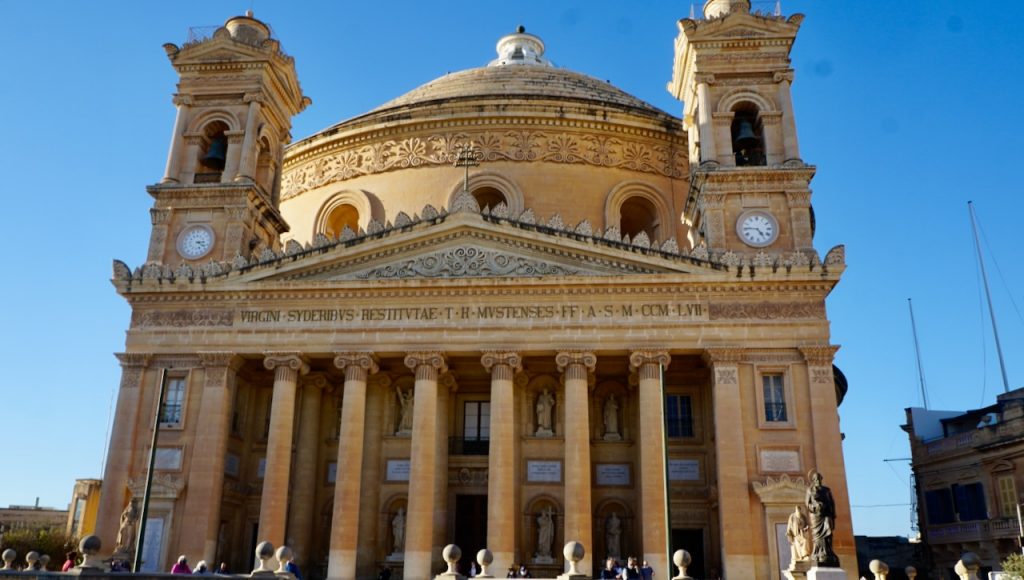
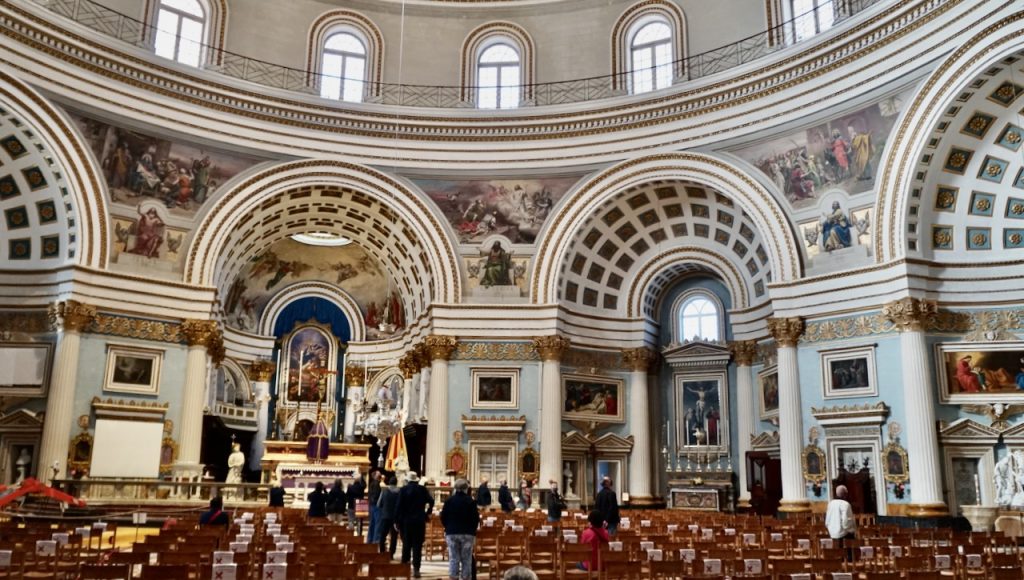
The village of Mosta is the site of the renowned Mosta Dome (or Rotunda of Mosta). The design of the present church is based on the Pantheon in Rome and was constructed between 1830-60. It has the third largest unsupported dome in the world at 60 meters/130 feet high and is Malta's largest and most famous church. The church narrowly avoided destruction during World War II when on April 9, 1942 a German aerial bomb pierced the dome and fell into the church during Mass, but failed to explode. This event was interpreted by the Maltese as a miracle.
In conclusion, as the saying goes, “location, location, location.” Malta is one of the world’s unlucky countries whose location caused it to become a land to be fought over again and again. Poland is another example of those unlucky countries, having been invaded by Sweden, Germany, and Russia. Ukraine is another such unlucky country, having been invaded previously by Russia before the current ongoing invasion. It is no surprise that Malta declares itself a neutral country, seeking to avoid being drawn into any future international conflict. Malta does not want a repeat of its past violent history.
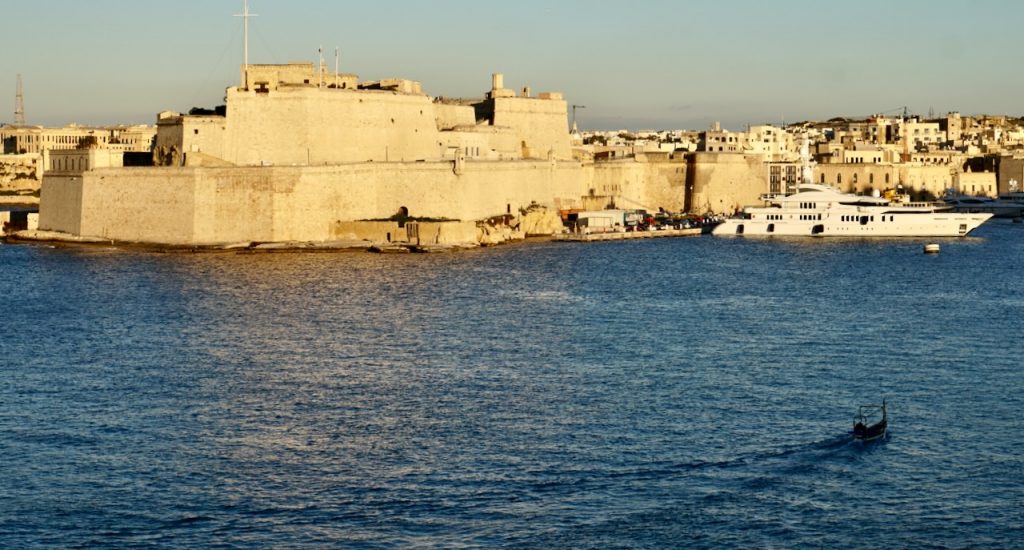
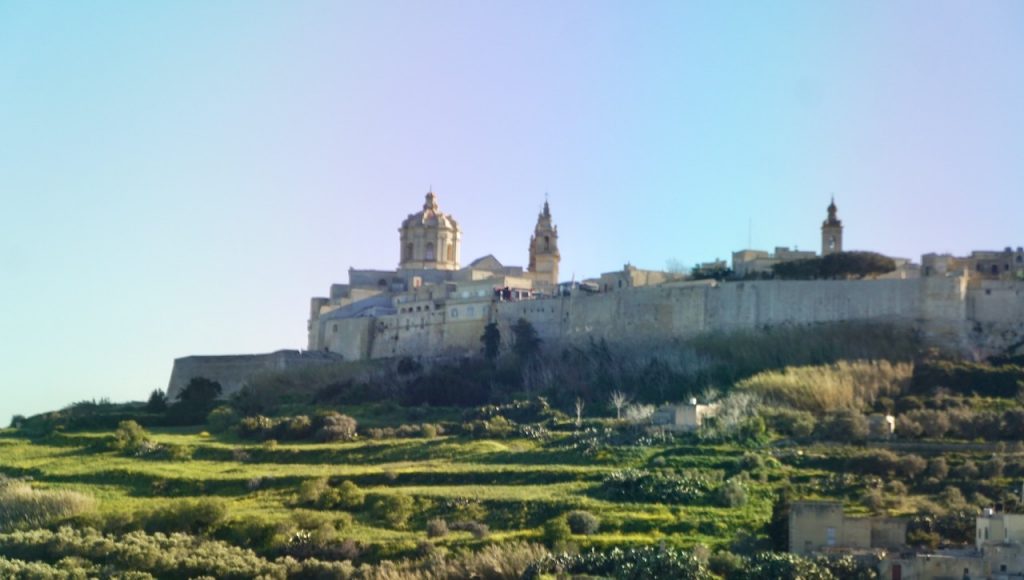
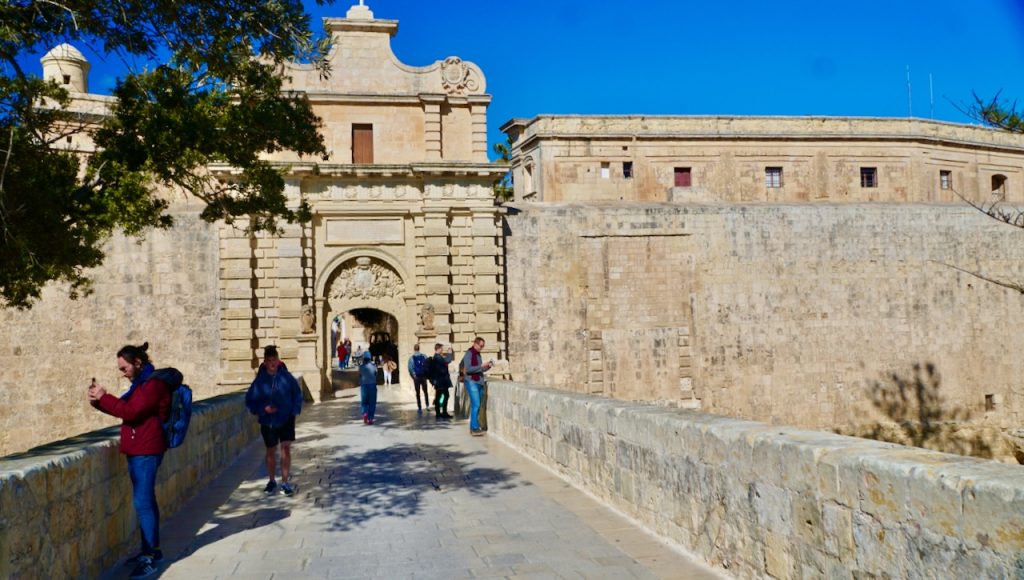
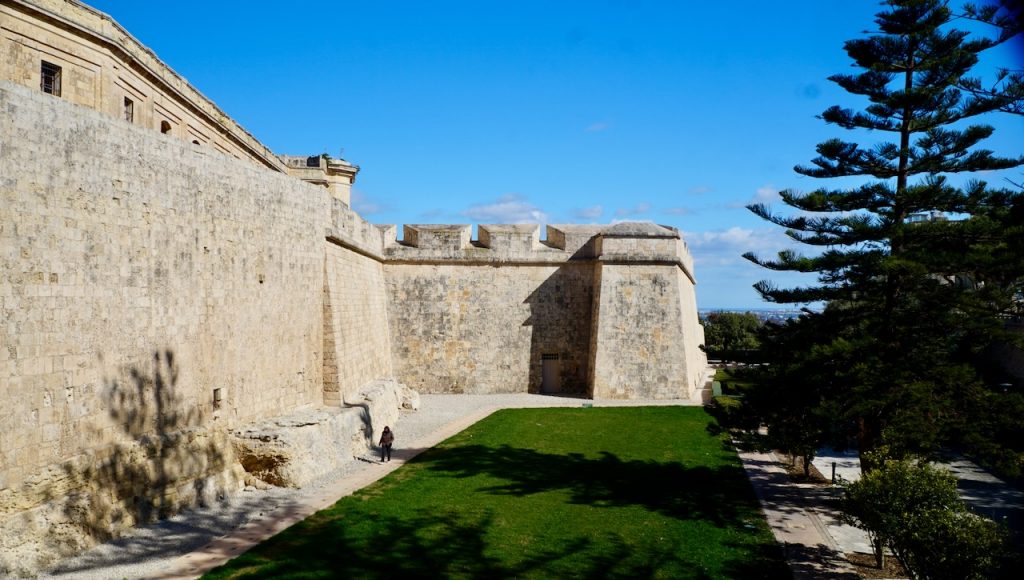
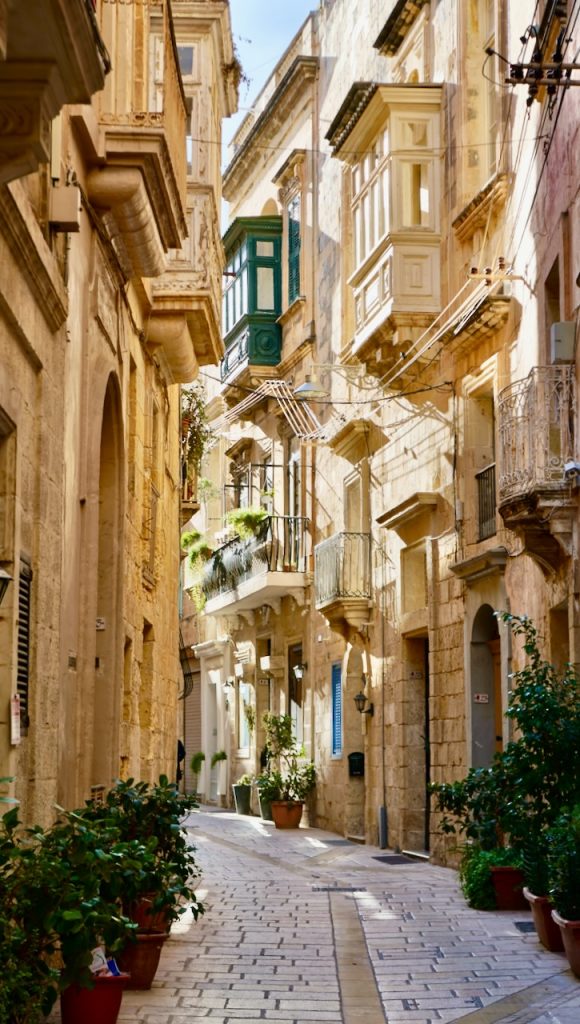
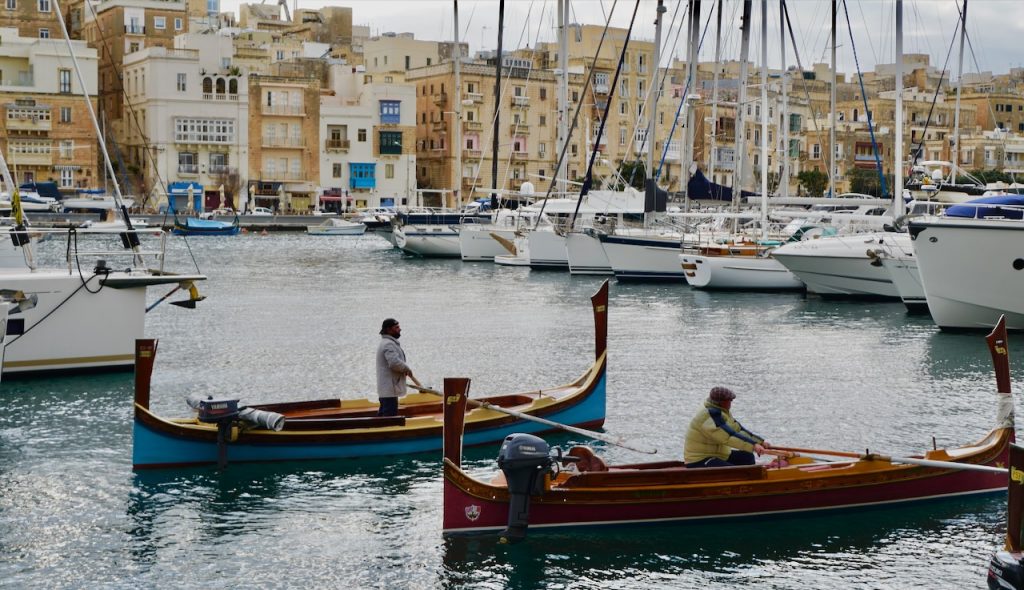
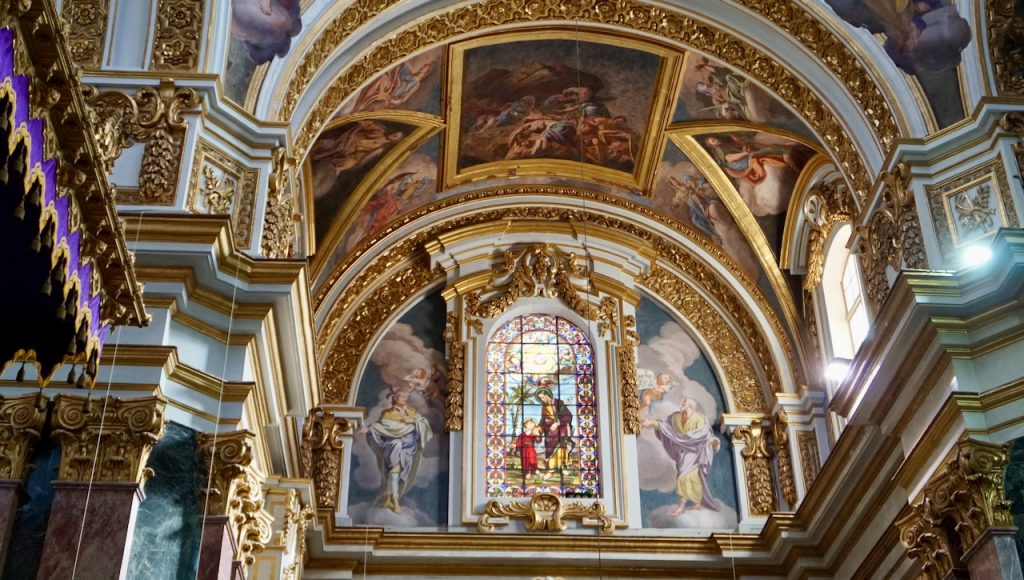
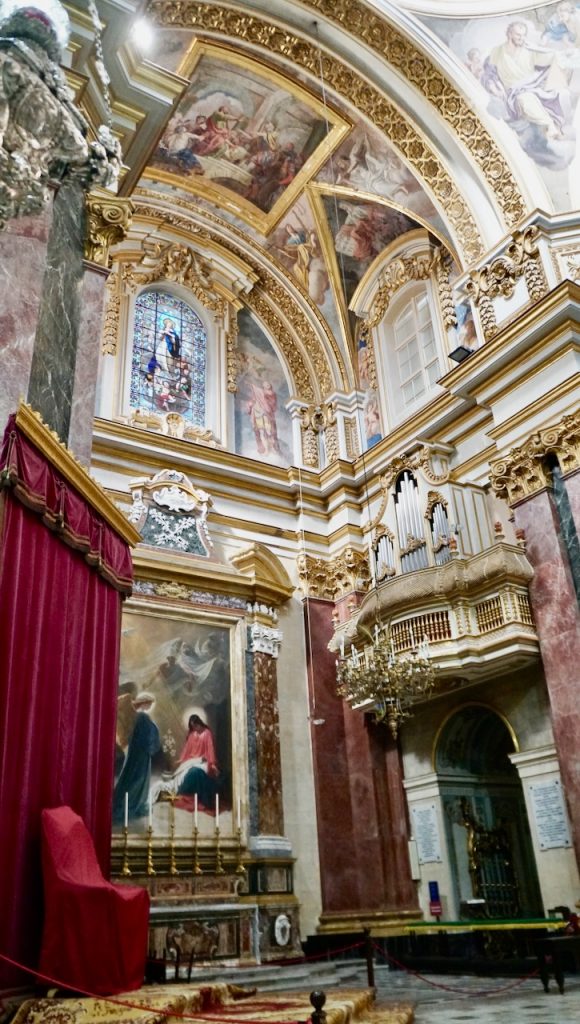
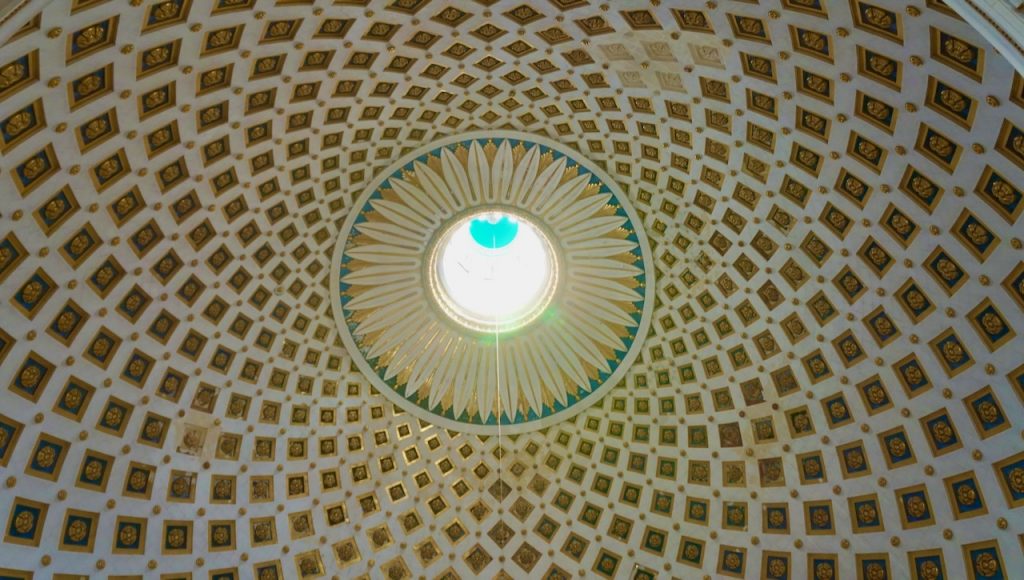
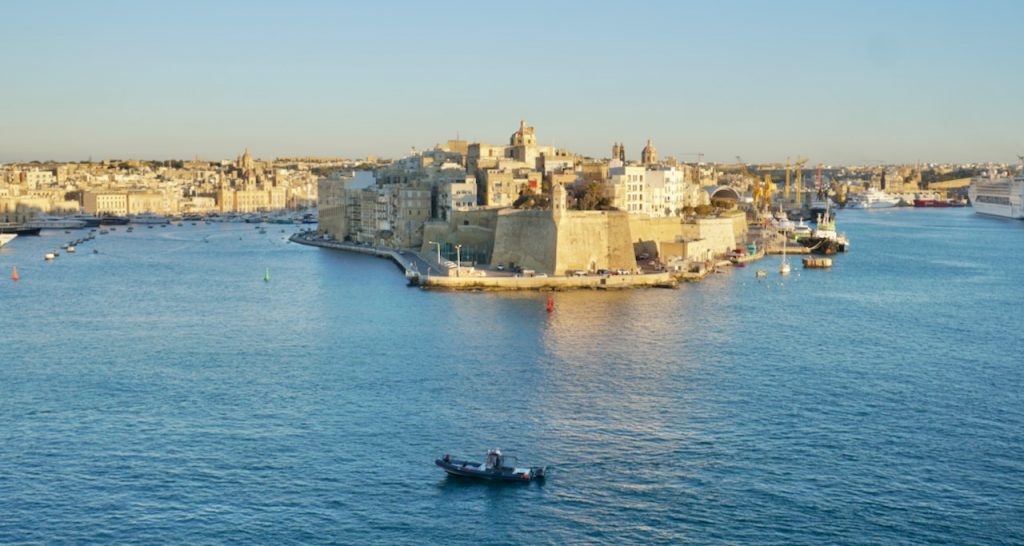
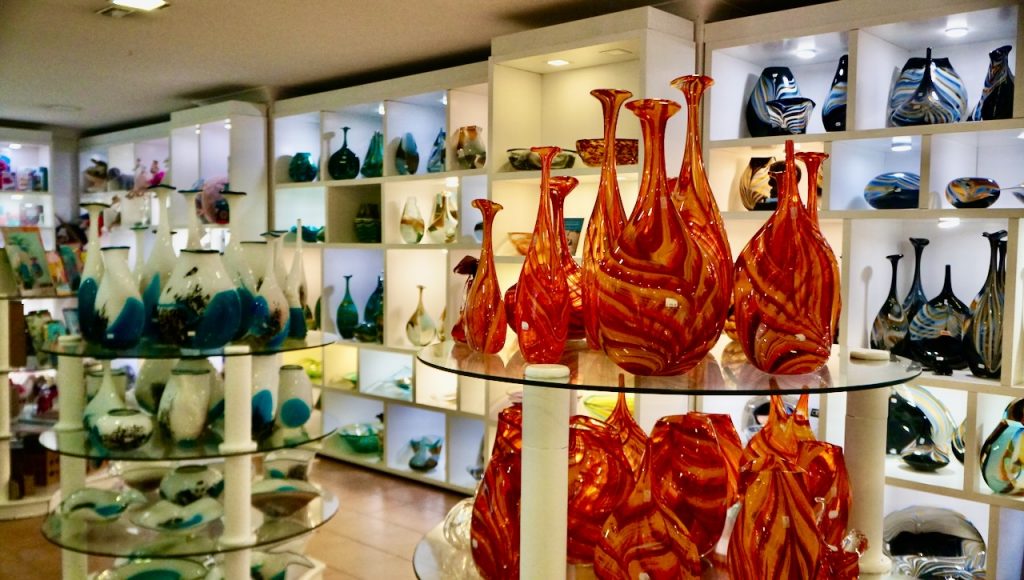
1 Comment on Malta
Join the Conversation